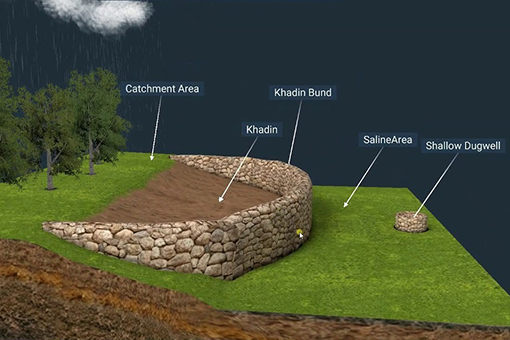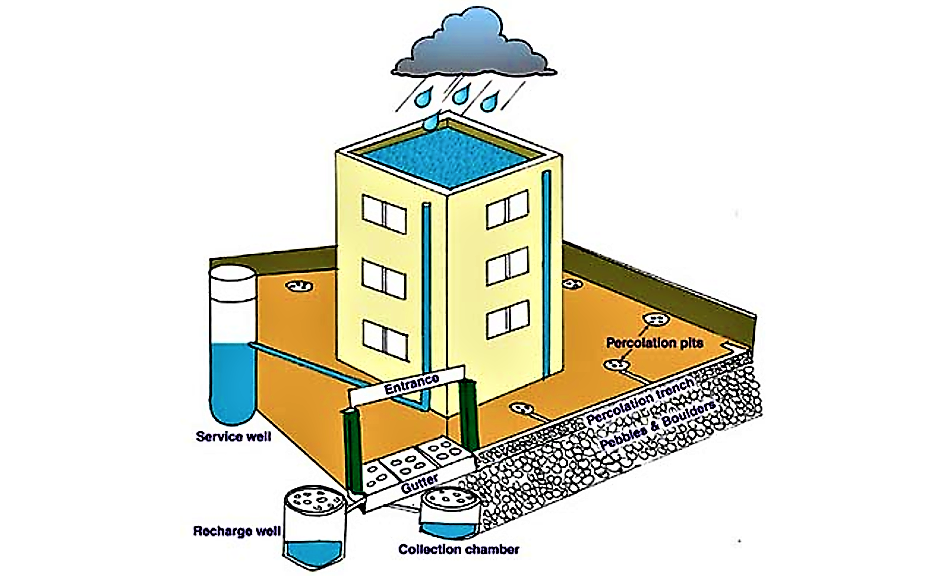
In India, a country that frequently faces water scarcity and drought, rainwater harvesting has emerged as a crucial strategy for managing and replenishing groundwater resources. This age-old technique, which involves collecting and storing rainwater for future use, offers significant potential for improving groundwater levels, particularly in regions that experience acute water shortages. Here’s an analysis of how rainwater harvesting can positively impact groundwater levels in India and contribute to sustainable water management.
Understanding Rainwater Harvesting
Rainwater harvesting refers to the collection and storage of rainwater from rooftops, land surfaces, or other catchment areas for later use. This practice involves a range of techniques, from simple storage systems to complex filtration and distribution setups. The primary objective is to capture rainwater that would otherwise run off and potentially contribute to surface water pollution or erosion, directing it instead into storage systems or directly into groundwater recharge systems.
Impact on Groundwater Levels
Recharge of Aquifers
One of the most significant benefits of rainwater harvesting is its ability to recharge aquifers. By directing rainwater into the ground through recharge wells, percolation pits, or infiltration trenches, the water gradually infiltrates the soil and replenishes the groundwater table. This process helps to maintain or increase groundwater levels, which is crucial in regions where over-extraction has led to a decline in water availability.
Reduction in Groundwater Depletion
In many parts of India, groundwater resources are being depleted at an unsustainable rate due to excessive extraction for agricultural, industrial, and domestic use. Rainwater harvesting helps mitigate this issue by reducing the dependency on groundwater for immediate needs. When rainwater is collected and stored, it decreases the pressure on existing groundwater resources, allowing for a more balanced and sustainable use of water.
Improved Water Availability
By augmenting groundwater supplies, rainwater harvesting enhances water availability, particularly during dry seasons or drought periods. This increased availability can benefit agricultural activities, which are heavily dependent on groundwater, and ensure that communities have access to a reliable water source. Improved water availability also supports better crop yields and can enhance food security.
Mitigation of Urban Flooding
In urban areas, rainwater harvesting systems can help manage stormwater runoff, reducing the risk of flooding. By capturing rainwater before it becomes surface runoff, these systems lessen the burden on urban drainage systems and reduce the risk of localized flooding. This not only helps in groundwater recharge but also minimizes damage and disruption caused by heavy rains.

Challenges and Considerations
Despite its benefits, the implementation of rainwater harvesting in India faces several challenges:
Infrastructure and Maintenance: Proper infrastructure is needed to efficiently collect and store rainwater. Regular maintenance is also required to ensure the system functions effectively and that the stored water remains clean.
Awareness and Adoption: There is a need for greater awareness and education about the benefits of rainwater harvesting. Widespread adoption is essential for maximizing its impact on groundwater levels.
Policy and Incentives: Government policies and incentives can play a crucial role in promoting rainwater harvesting. Supportive regulations and financial incentives for installation and maintenance can encourage more widespread adoption.
Case Studies and Success Stories
Several regions in India have successfully implemented rainwater harvesting systems with positive outcomes. For example:
Rajasthan: In the arid state of Rajasthan, traditional rainwater harvesting methods such as johads (check dams) and talab (ponds) have been employed for centuries. Modern adaptations and government initiatives have revitalized these practices, contributing to improved groundwater levels.
Bangalore: The city of Bangalore has seen significant improvements in groundwater recharge through the implementation of rainwater harvesting in residential and commercial buildings. This has led to better management of the city’s water resources.
In conclusion, Rainwater harvesting offers a valuable solution for addressing groundwater depletion and water scarcity in India. By capturing and utilizing rainwater, communities can contribute to the replenishment of aquifers, reduce reliance on groundwater, and improve overall water availability. While challenges remain, the benefits of rainwater harvesting make it a crucial component of sustainable water management strategies. Continued efforts to enhance awareness, infrastructure, and policy support will be key to maximizing the impact of rainwater harvesting on groundwater levels across the country.


